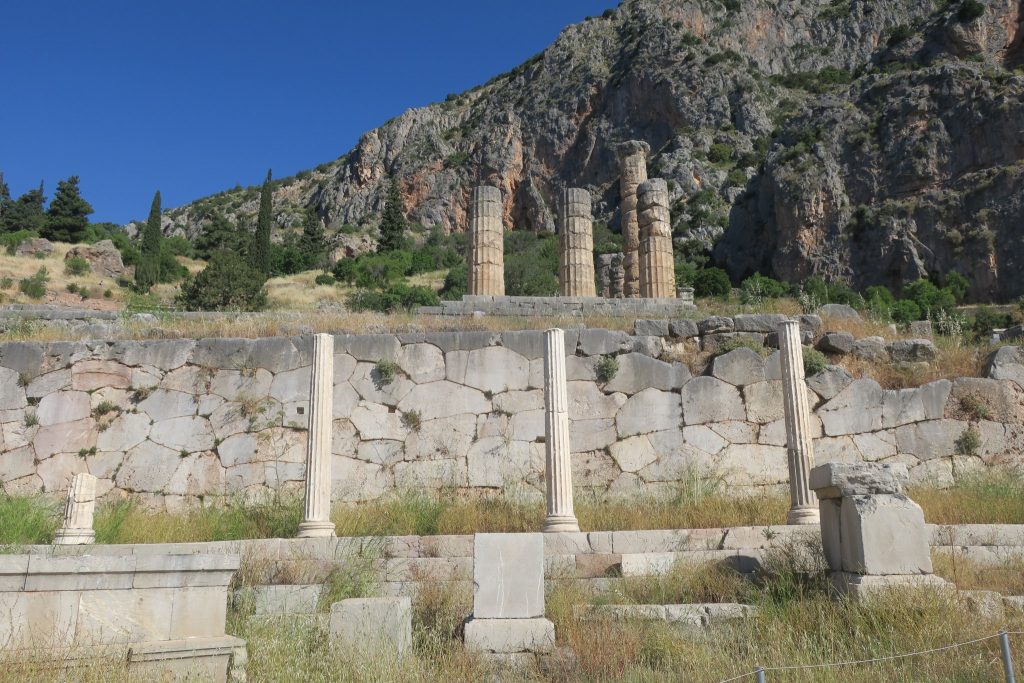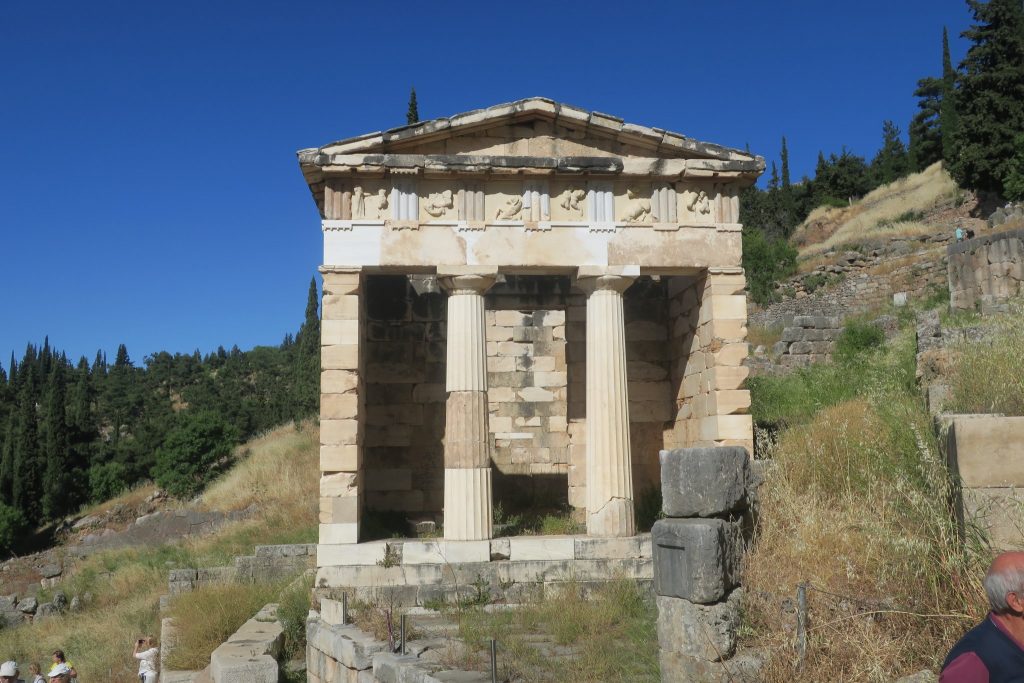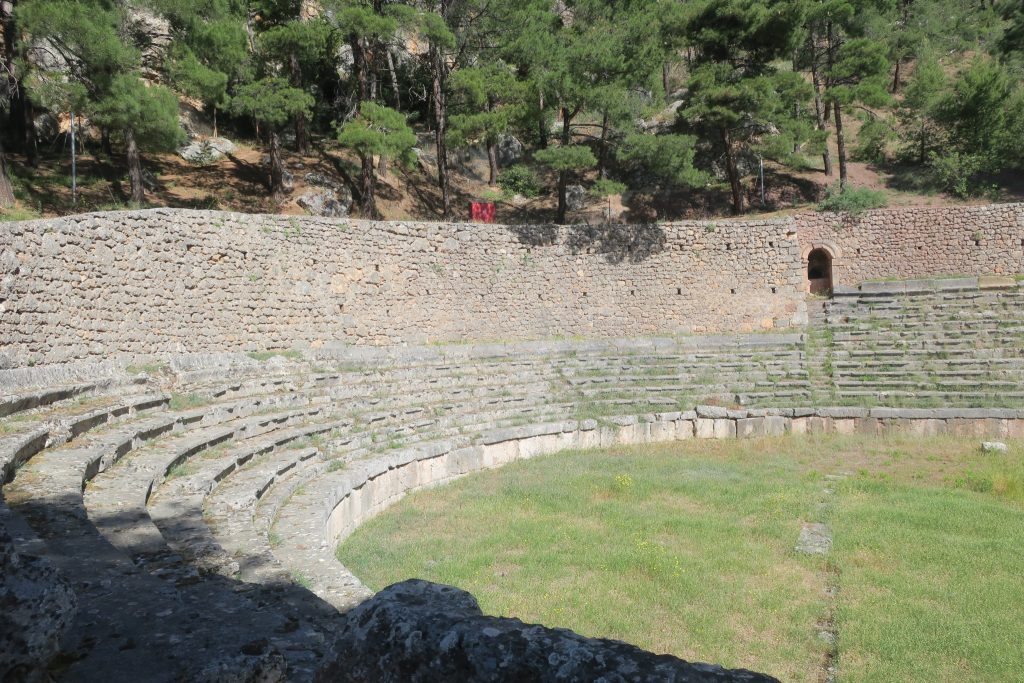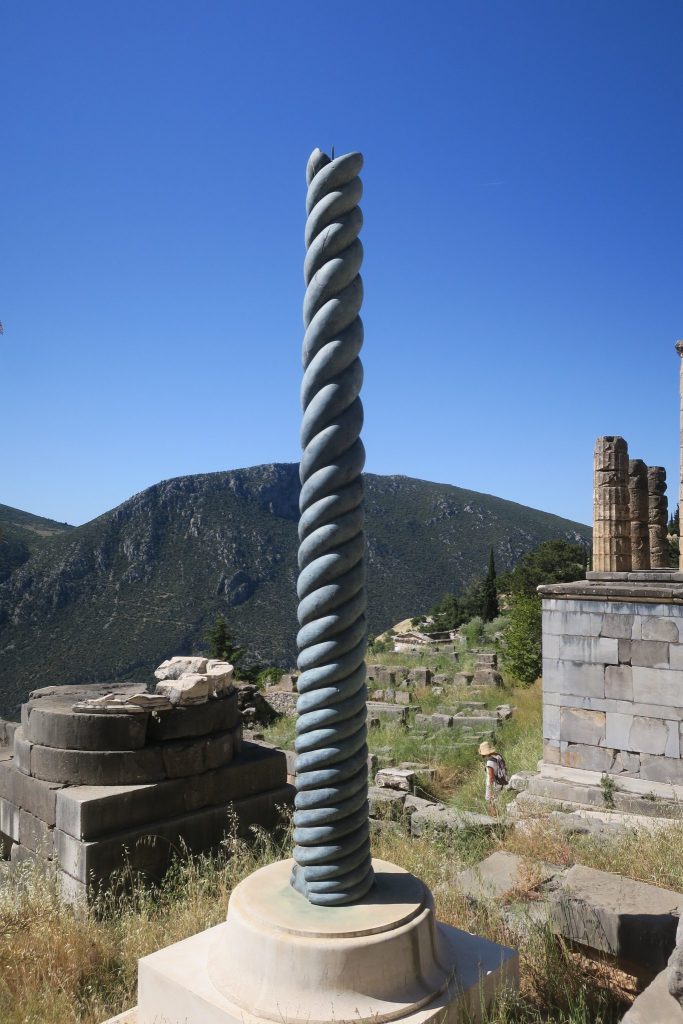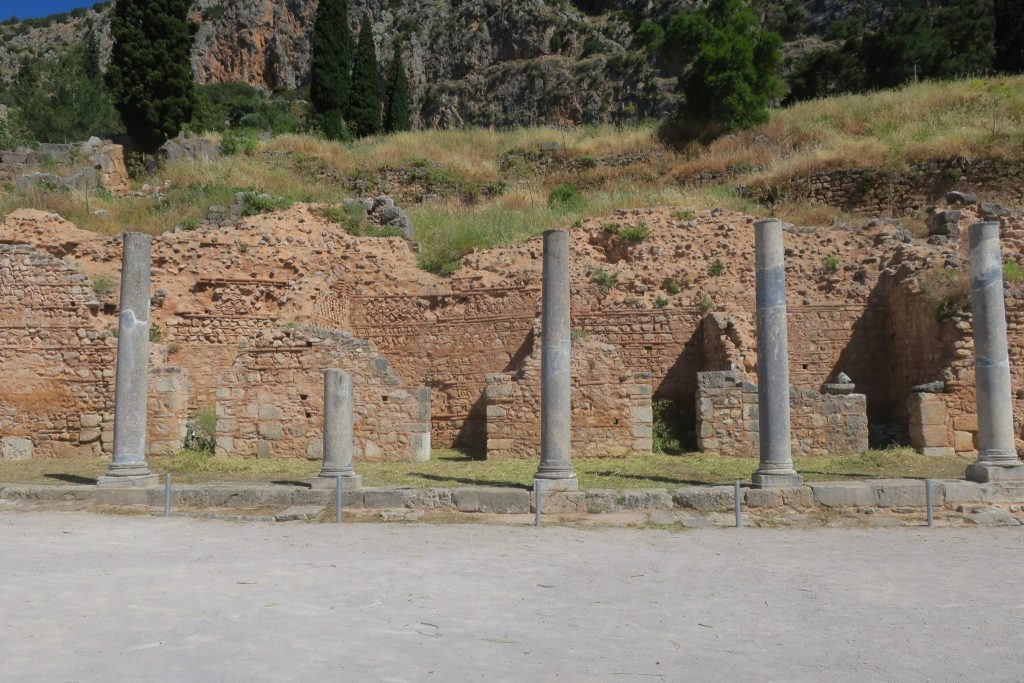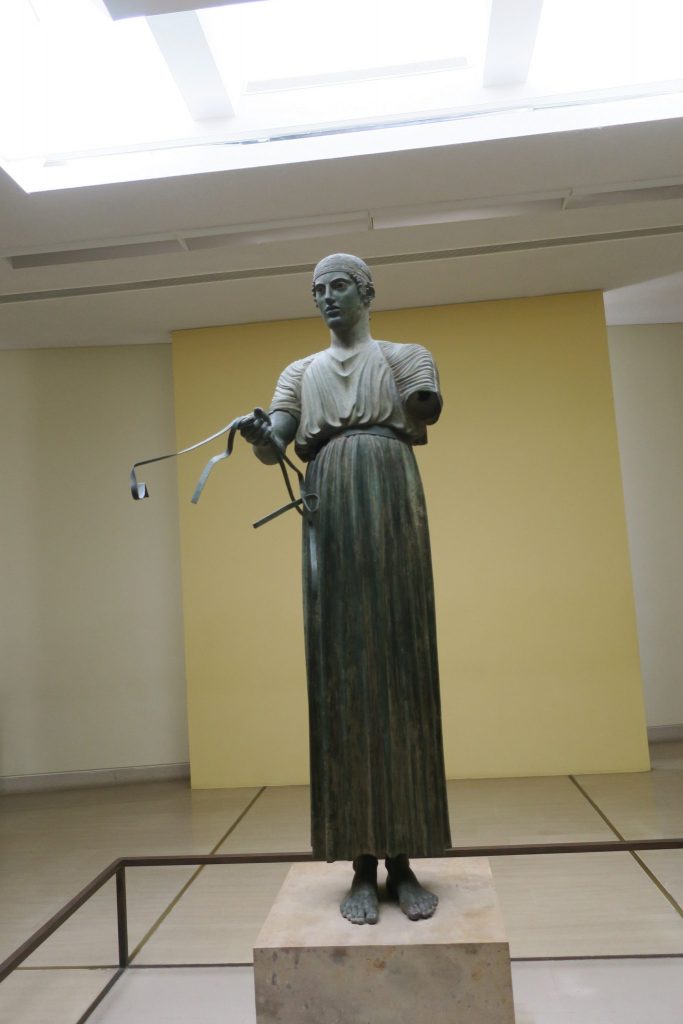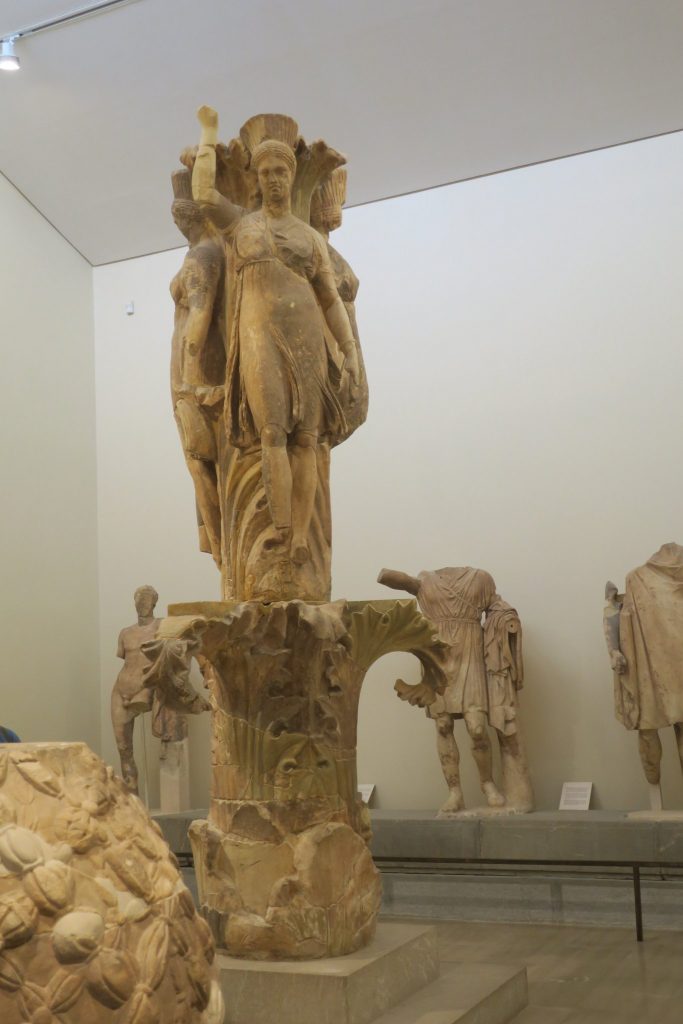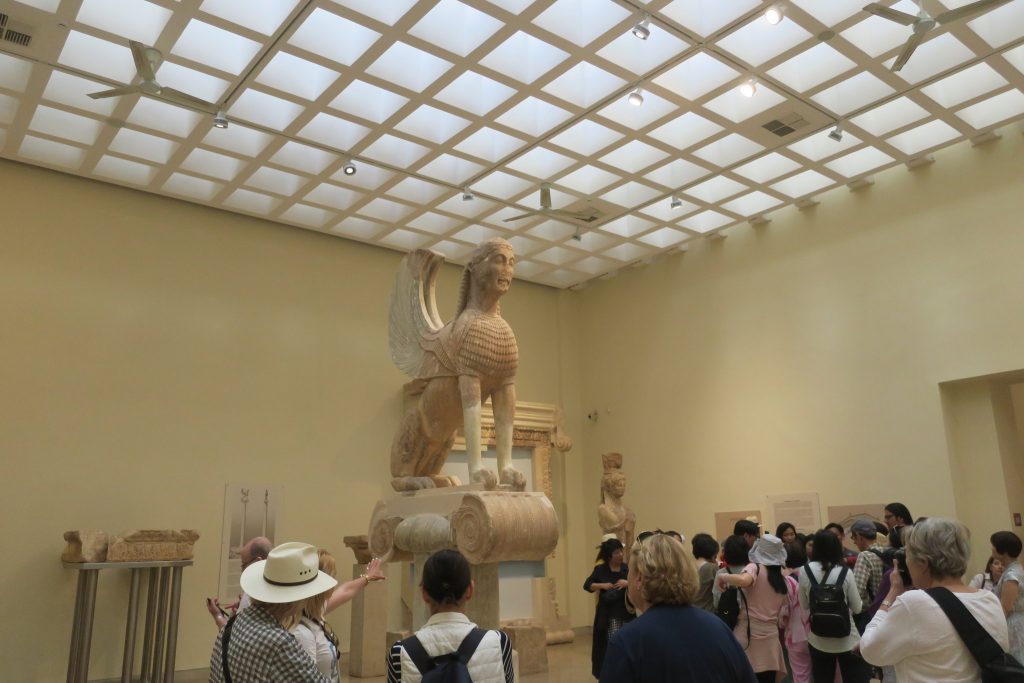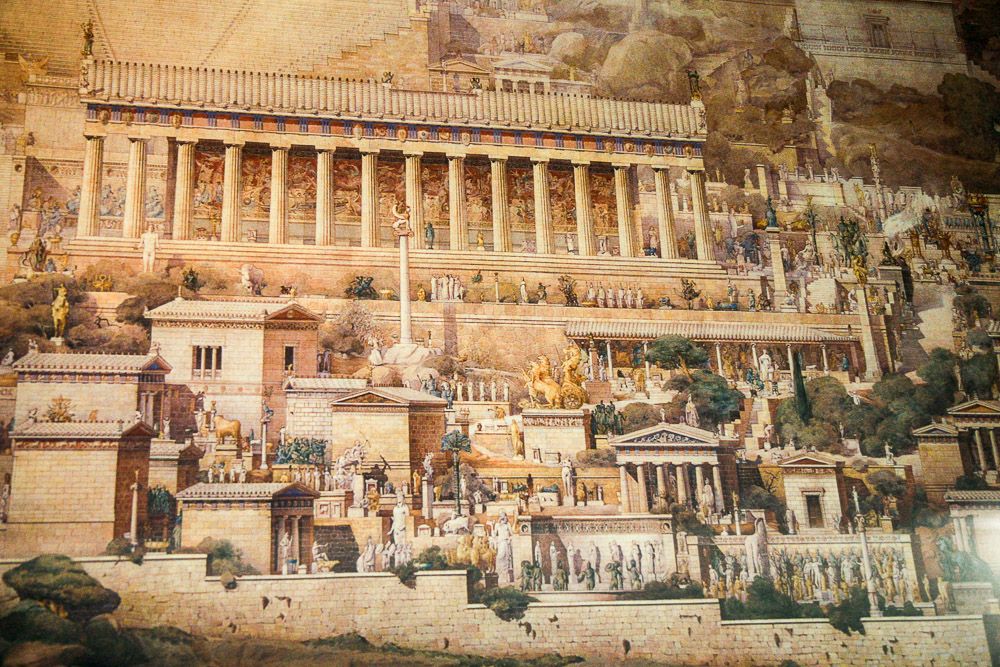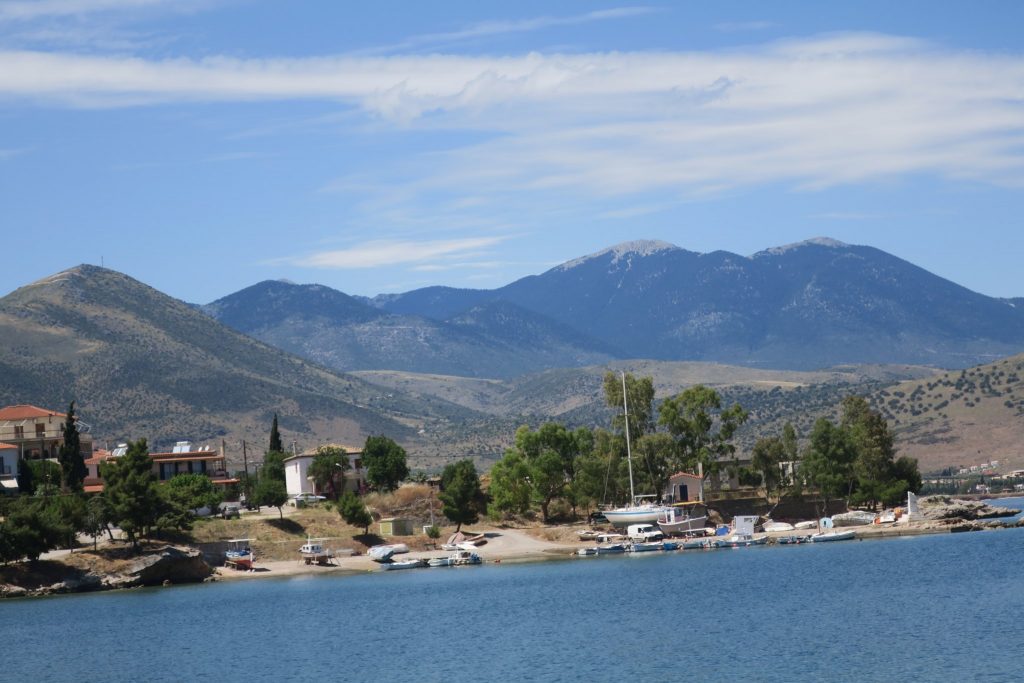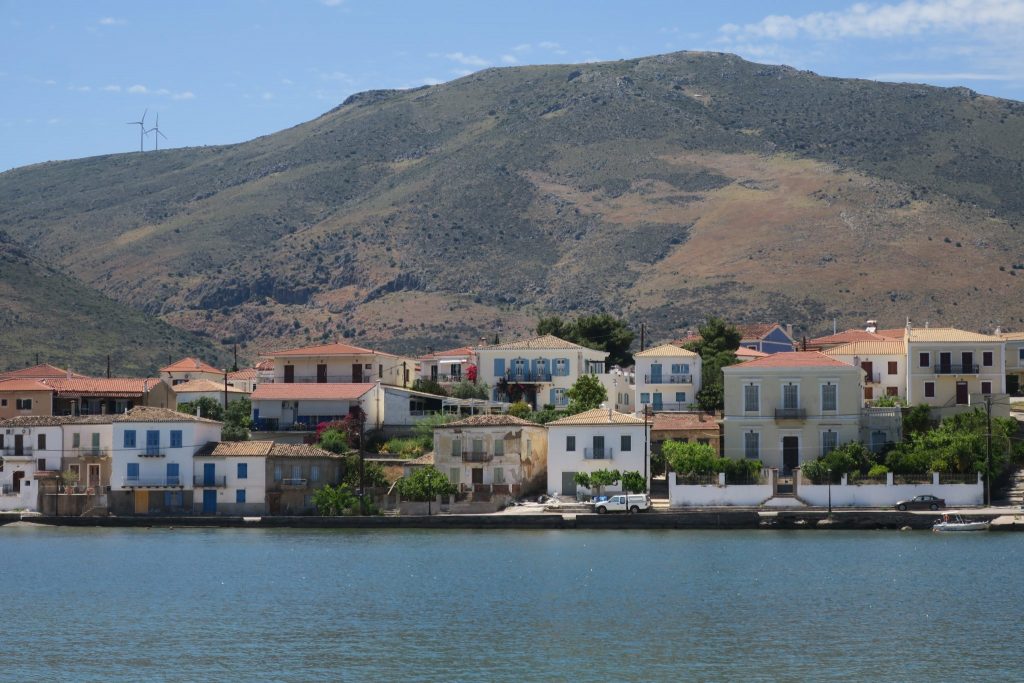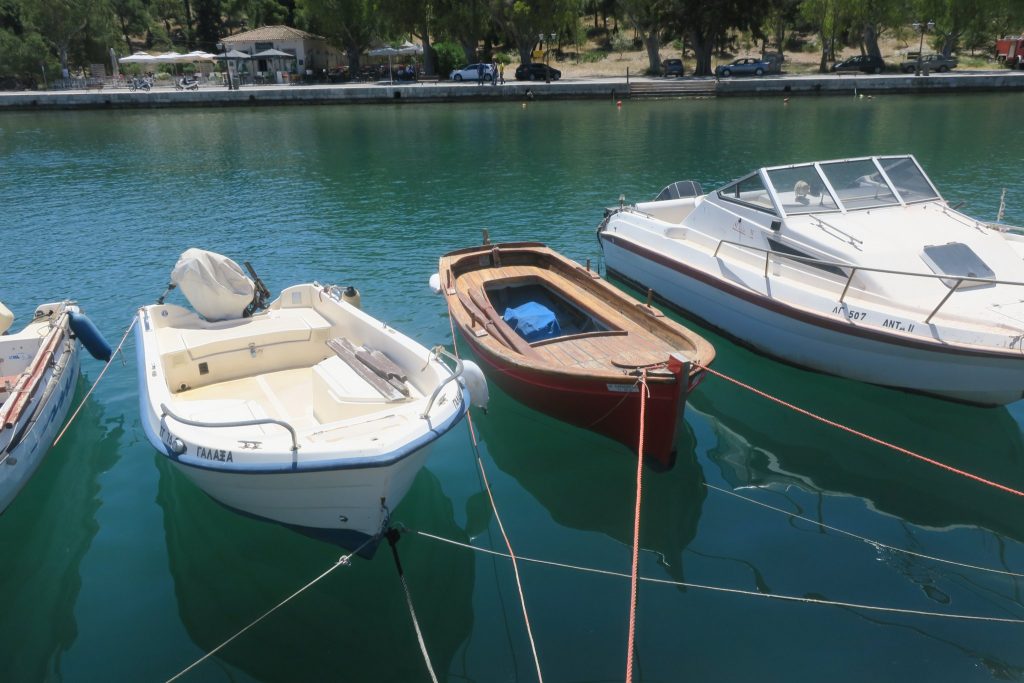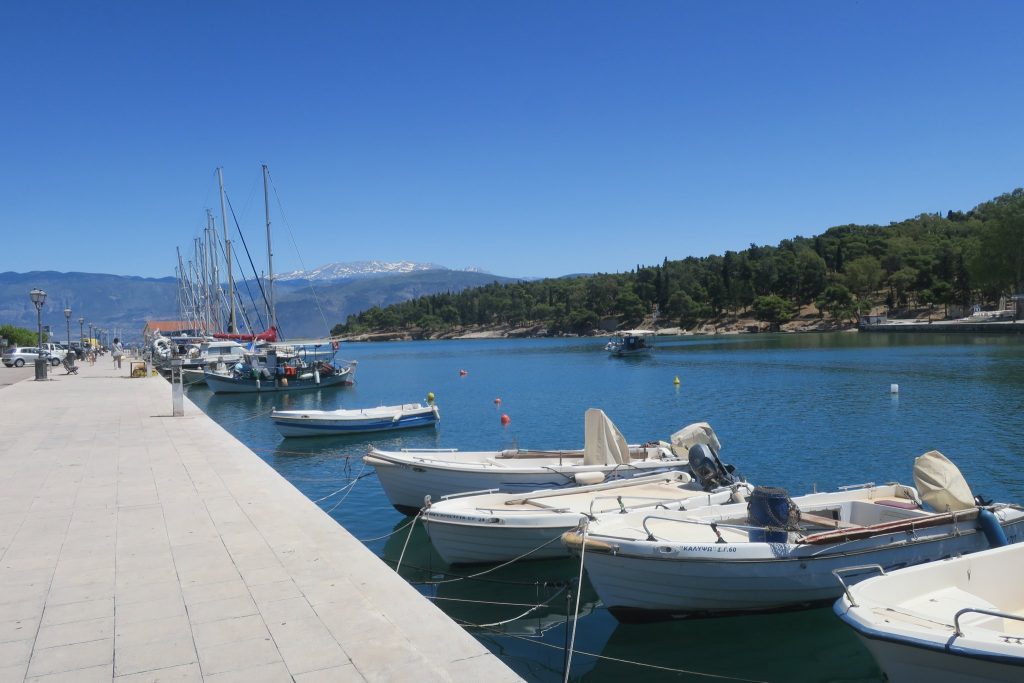This morning we were out early because in the Rick Steve’s guide book said that parking at Delphi’s archaeological site could be difficult (in hindsight I think he meant during high season). We drove to the site parked the car and walked about 10 minutes into town for breakfast. We bought croissants at the bakery and ate them at a coffee shop overlooking the valley. Then we walked back to the archaeological site.
Before going any further, let me give you some background on Delphi (from pbs.org, https://www.pbs.org/empires/thegreeks/background/7_p1.html)
“Dating back to 1400 BC, the Oracle of Delphi was the most important shrine in all Greece, and in theory all Greeks respected its independence. Built around a sacred spring, Delphi was considered to be the omphalos – the center (literally navel) of the world.
People came from all over Greece and beyond to have their questions about the future answered by the Pythia, the priestess of Apollo. And her answers, usually cryptic, could determine the course of everything from when a farmer planted his seedlings, to when an empire declared war.
Arguments over the correct interpretation of an oracle prophesy were common, but the oracle was always happy to give another prophecy if more gold was provided. A good example is the famous incident before the Battle of Salamis when the Pythia first predicted doom and later predicted that a ‘wooden wall’ (interpreted by the Athenians to mean their ships) would save them.
The lack of a strict religious dogma associated with the worship of Greek gods also encouraged scholars to congregate at Delphi, and it became a focal point for intellectual enquiry, as well as an occasional meeting place where rivals could negotiate.
Delphi became a fantastic showcase of art treasures and all Greek states would send rich gifts to keep the Oracle on their side. It finally came to an end in the 4th century AD when a newly Christian Rome proscribed its prophesying.”
The archaeological site consists of ruins and a museum which can be done in either order but you really need to do both to get a good understanding of what Delphi was and what it looked like. We started with the ruins which are set on a hill. I used the Rick Steve’s guidebook and the information plaques to get a sense of what it looked like at its peak. Here are pictures.
Then we went into the museum and saw artifacts that had been recovered from the site.
Here is a picture of what they think it looked like at its prime.
The ruins and museum combined to give us a good sense of Delphi 2,500 years ago. It was a religious focal point with incredible displays of tribute and wealth with some corruption thrown in.
After exploring Delphi we went to Galaxidi, a sleepy coastal town which had been building ships until about 100 years ago. To get there we drove along the coast which was very undeveloped (we later learned it was underdeveloped because there are very few roads along the coast). We found it to be very quaint. We walked along the pier, looking at the boats. We spoke to an Irish gentleman who had sailed from Florida to Ireland in 2012 and just been sailing around Europe ever since. He and Rick talked sailing for awhile. We asked him for a lunch restaurant recommendation. We went to his recommendation and had a great lunch. Here are pictures of Galaxidi.
Then we drove back to the apartment and relaxed. All in all a very nice day.


